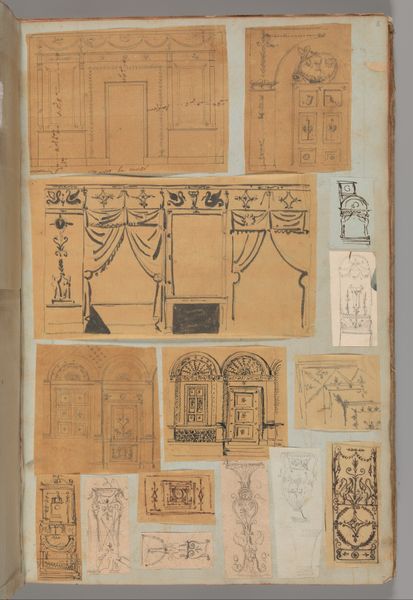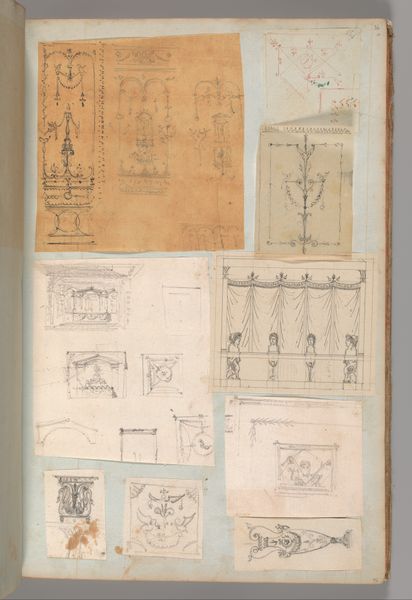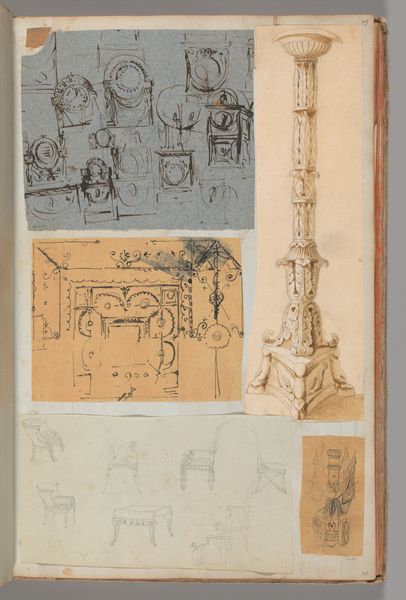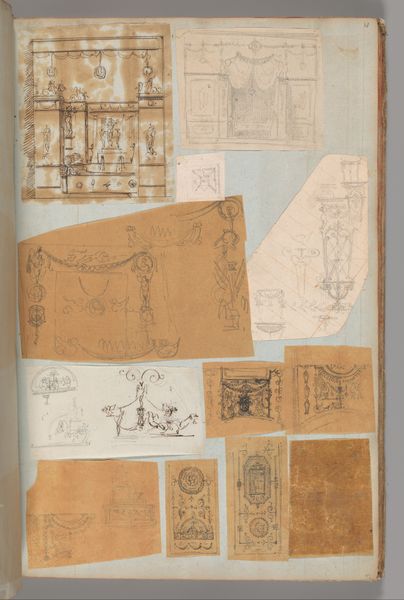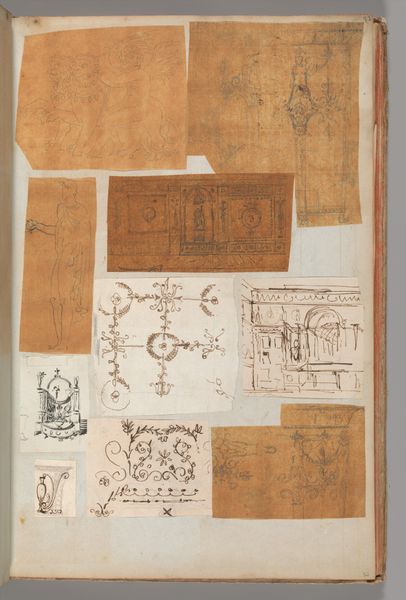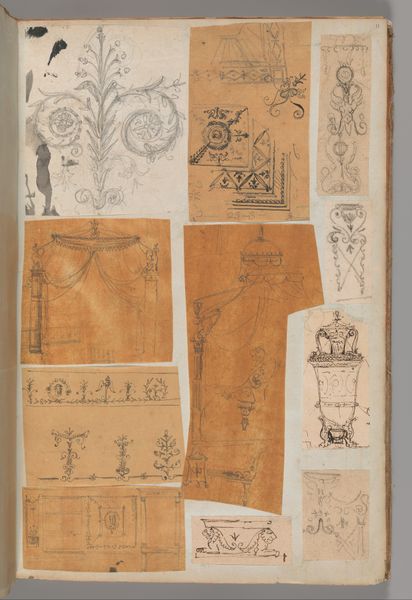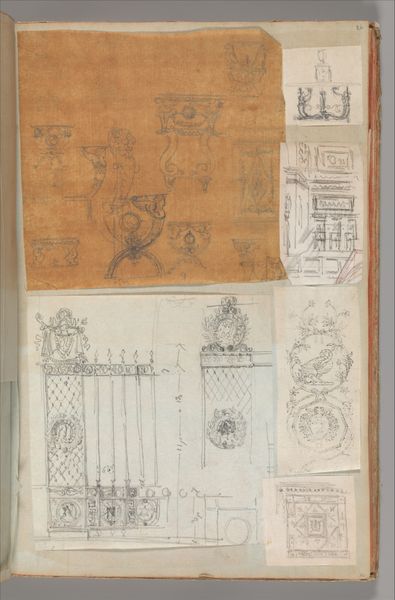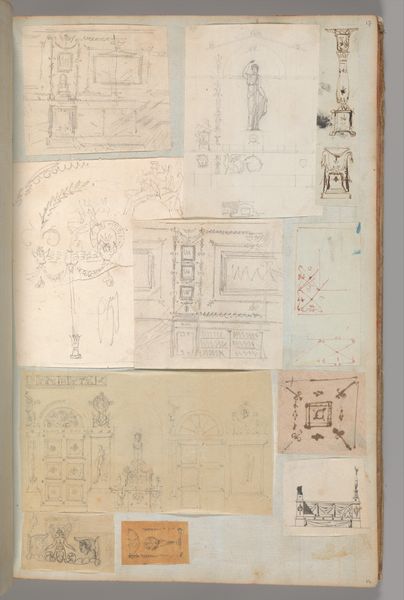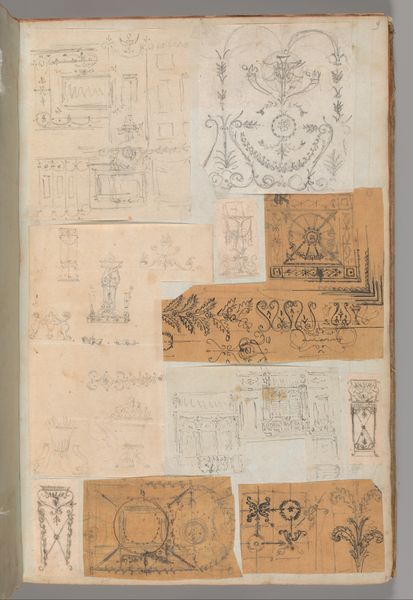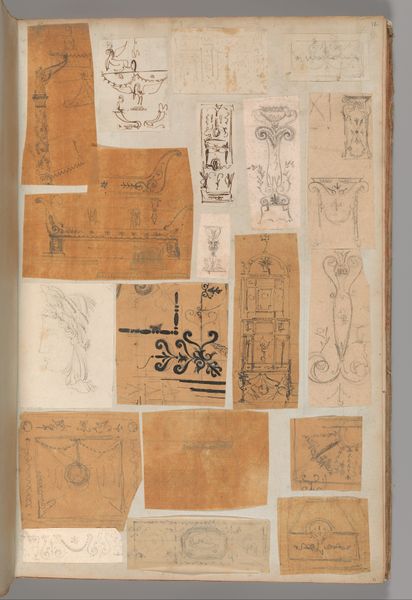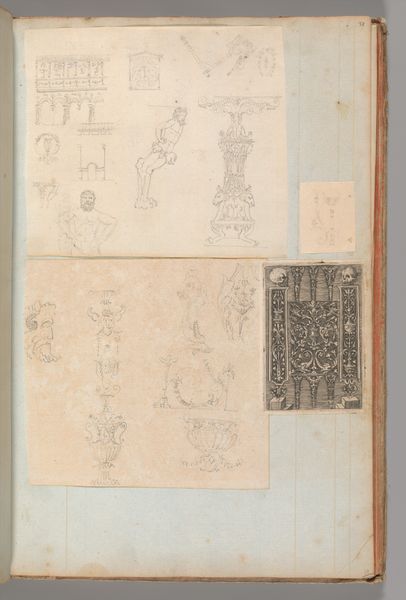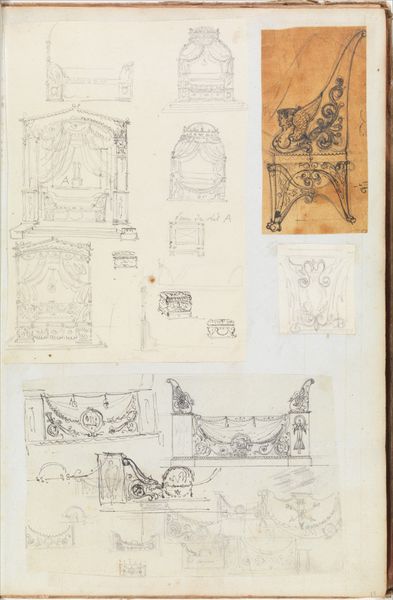
Page from a Scrapbook containing Drawings and Several Prints of Architecture, Interiors, Furniture and Other Objects 1795 - 1805
0:00
0:00
drawing, print, architecture
#
drawing
#
neoclacissism
# print
#
architecture
Dimensions: 15 11/16 x 10 in. (39.8 x 25.4 cm)
Copyright: Public Domain
Curator: This scrapbook page by Charles Percier, created between 1795 and 1805, offers a fascinating glimpse into the world of Neoclassical design. It’s brimming with architectural sketches, furniture ideas, and decorative elements. Editor: It's a peek into the artist's mind. It seems like such a functional document, a way for him to organize his inspirations. But there are also some strange, disjointed collage-like qualities, mixing drawing and prints. What’s your take on the purpose of these fragments? Curator: Absolutely! Look at how these meticulously rendered architectural details contrast with the more ephemeral, almost casual sketches. Consider the political landscape of the time. The French Revolution had recently shaken the foundations of the aristocracy. Do you notice how Neoclassicism became a visual language, consciously adopted by the rising middle class and the new empire under Napoleon? Editor: I see that now! All of these Roman and Greek motifs… They aren't just pretty; they're making a statement. Almost like appropriating the aesthetic power of past empires. Curator: Precisely. These designs weren't just about aesthetics. Think about the social messaging that would be perceived at the time. For example, an object in this scrapbook with imagery such as this grand vase might have subtly influenced the power structures. Can you think how? Editor: Because it projects a certain image. The clean lines and ordered design would have signified order and reason after chaos, right? Plus, all that overt luxury would speak to the owner’s elevated status. Curator: Exactly. This is a window into understanding class aspiration as the foundation of a modernizing society, through access and distribution. Scrapbooks such as this demonstrate how the visual culture of Neoclassicism reinforced specific ideas about authority, and power. Editor: That is more interesting than I ever thought it could be! I always saw Neoclassicism as stuffy. Curator: Art always carries ideology. Learning to unpack it is one of art history's greatest gifts.
Comments
No comments
Be the first to comment and join the conversation on the ultimate creative platform.
